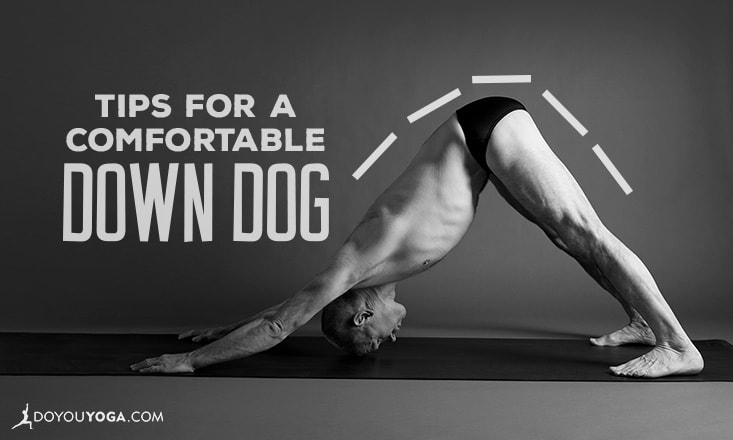Downward Facing Dog, or Adho Mukha Svanasana in Sanskrit, is arguably the most popular pose in yoga. This is probably because it is the most frequently practiced pose, and therefore the most recognizable by seasoned yogi and newbies alike.
If you were to ask any yoga practitioner what the most difficult pose in yoga is, they will most often tell you Downward Dog.
Being Comfortable in the Pose
Ok, that’s a complete lie; people love Down Dog! They approach it as a resting pose, a comfortable break from a fast-paced vinyasa or challenging balance sequence. What I’ve found is that the most trouble students have with Downward Dog is in the teaching of it.
There are so many differing schools of thought, causing alignment cues to conflict. The worst part is that students get confused, discouraged, and even practice the pose in a way that could be harmful to their bodies in the long run.
As far as I’m concerned, differences are what make the world a beautiful place. This is not an attempt at proving who is right and who is wrong. My goal is simply to make your practice more enjoyable and rewarding. Here are my five tips for a more comfortable Downward Dog:
1. Position Your Feet
Let’s start from the ground up, with your feet, and no this is not about reaching your heels to the ground. This alignment cue, as you may have guessed, is more about comfort than it is about flexibility.
In Downward Dog you want to make sure that your feet are placed hip distance apart with your toes pointing to the front edge of your mat. This will allow your hips to position evenly and for ultimate comfort in your feet, legs, and hips.
2. Bend Your Knees
This is an amazing tip for those who have limited flexibility or are just feeling extra tight in the backs of their legs. People often hesitate to bend their knees in Down Dog, attempting to straighten their legs as much as possible, even locking out the knees.
My tip: let go of the intensity and relax. If you are looking to find a bit more comfort and relaxation in your Down Dog, take a slight bend in your knees and lift your heels an inch or two off of the ground. You can even roll up a mat or blanket and place it beneath your heels for more support.
Trust me, this tip is a game changer.
3. Support Your Hands and Wrists
I often hear people complain that their hands or wrists feel discomfort or pain in Downward Dog.
To remedy this, first make sure that your hands are placed shoulder distance apart. Next, check your fingers. Ideally, you want your middle finger pointing straight ahead with your fingers spread wide. Take a slight bend in your elbows, as this will ensure that the weight of your body is being supported properly by the muscles in your arms, rather than the bones.
If you’ve made all of these adjustment and find that you need more support, try this. Place a rolled towel or blanket under the base of your palms to create a super comfy cushion for your wrist.
4. Relax Your Neck and Shoulders
Once you’ve taken time to check your alignment and make all of the proper adjustments, now it’s time to settle into the pose.
I love to gently turn my head side to side, or shake it yes and no. This encourages my neck to relax and allows my head to hang heavy. This is a wonderful release for the neck and for the tension in your shoulders as well.
Focus on releasing tension in your shoulders by taking a deep breath in and out, encouraging your shoulders away from your ears.
5. Release the Clutter and Just Be
Maybe the most important thing to remember, in order to make your Downward Dog as comfortable as possible is to just be.
Remember that this is YOUR practice. While all of the instructions from your teacher are important, the most important part is that you are enjoying yourself. So to make your Down Dog comfortable, let all of the clutter leave your mind. Take three to five deep breaths while you attempt to clear your mind and relax.
Downward Dog is a challenging pose, there’s no doubt about that! It can be difficult to take in all of the subtle adjustment and alignment cues and still find relaxation.
Hopefully once you find comfort in your body, your mind will follow. As with every pose in yoga, it is important to remember that each body is different. What may be comfortable for one yogi, will be terribly uncomfortable for another.
I hope you will find these tips as a helpful guideline. Ultimately I hope you will experiment to find the adjustments that make your unique body comfortable and cozy in Downward Dog.


